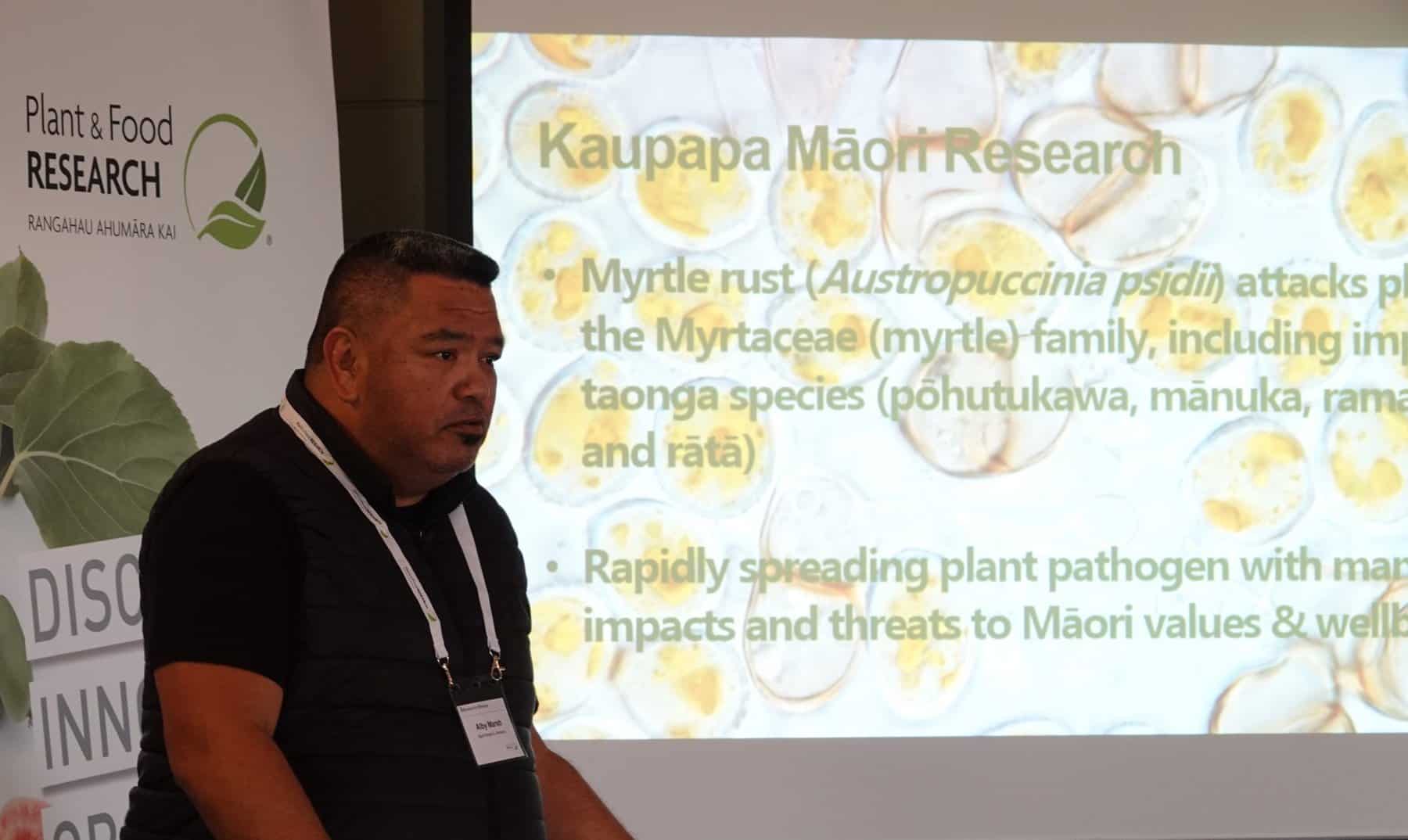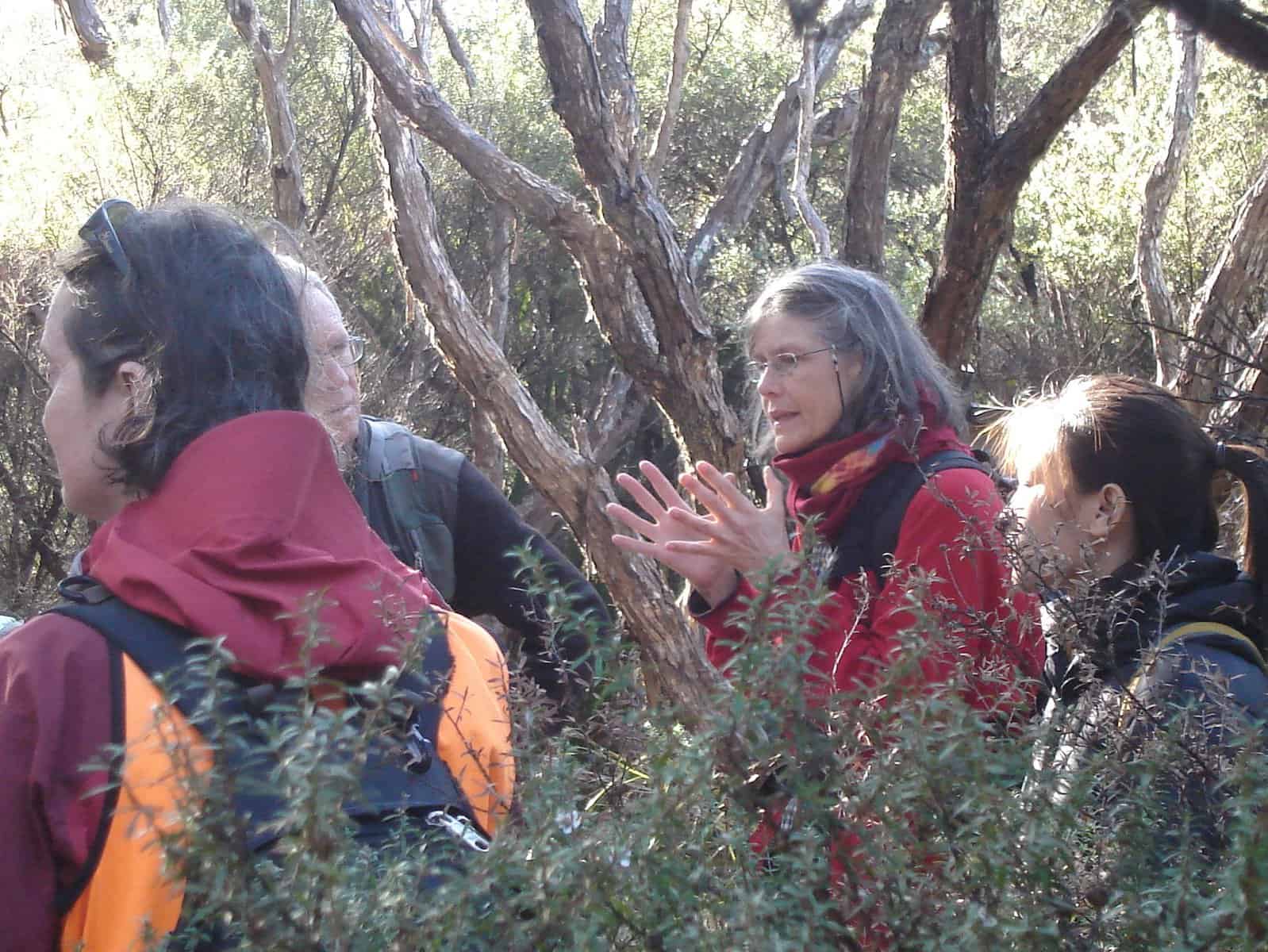
So really it just makes sense that, despite being funded by different organisations, researchers venture into the field together.
Roanne Sutherland, Dr Julia Soewarto and Dr Michael Bartlett from Scion are experts at working in with each other’s schedules – having conducted their myrtle rust field work in the Rotorua area for a couple of years now.
Roanne and Julia are currently funded by Ngā Rākau Taketake (NRT) and Michael by Beyond Myrtle Rust (BMR), but they’re all looking at myrtle rust infection on native species in the field.
So every month they coincide their work and help each other out.
Michael says over summer they checked the myrtle rust field sites together, with Roanne and Julia helping him out with sampling. Then they would all focus on some of the Lophomyrtus reproductive work and disease impact monitoring that Roanne and Julia were doing.
This teamwork is reflected at a management level, with NRT co-leader Dr Maureen O’Callaghan (AgResearch) and BMR programme leader Dr Mahajabeen Padamsee (Maj; Manaaki Whenua – Landcare Research) working closely together.
Maureen says “We are putting huge effort into ensuring seamless coordination between the programmes, so we can avoid duplication of work and maximise the science outcomes. There is limited funding for myrtle rust research so it’s essential we’re well coordinated.”
Maj says the adaptive management framework on which the BMR programme is based also allows the team to quickly take up research priorities developed through discussions between the two programmes.

Signalling an aligned path
The signalling pathways between the myrtle rust pathogen and its host plant are complex and there is a lot of research to be done to fully understand how these pathways work.
Dr Grant Smith (Plant & Food Research) is investigating this system through the Host, Pathogen & Environment theme in NRT. It complements his workstream in BMR, where his team is using genetic techniques to study the interaction between myrtle rust and mānuka.
Grant says the continuity between the two programmes lets them easily build on early findings.
“The NRT research will bring protein biochemistry expertise to our BMR investment. This will contribute to forming an understanding of how disease occurs and thus how we may be able to stop it. This is something that wouldn’t have been possible without great support from both programmes.”
Plant & Food Research Māori relationship manager Alby Marsh also has a foot in both camps – leading BMR’s Kaitiakitanga and Māori-led Solutions, as well as NRT’s Conservation & Restoration.
Connection to tangata Māori is central to both workstreams: ensuring continued participation and representation by Māori in the areas of myrtle rust research and kauri dieback.
Alby says the Māori-led solutions to disease management being looked at in BMR are complementary to the approaches being used in NRT, with natural synergies coming from a bionetwork of native flora and fauna.
What occurs normally in the ngahere (forest) may be indicators of how Tāne responds to new pests and diseases.

Creating broader opportunities for the next generation
Associate Professor Luitgard Schwendenmann (University of Auckland) says saving ecologically and culturally unique native forests is a major undertaking, one which she is honoured to contribute to through both BMR (Ecosystem Impacts) and NRT (Risk Assessment & Ecosystem Impact).
But Luitgard is a teacher as well as a researcher.
“My aim is to provide more opportunities to train the next generation of scientists,” she says – something she can do better leading research in multiple programmes.
Roanne and Michael agree that different teams working together is important to provide research opportunities for students. Summer student Kristin Gillard from Toi Ohomai Institute of Technology in Tauranga recently joined the myrtle rust team for the busy summer period, working across all their research projects.
This provided research assistance for the entire team and gave Kristin a wide breadth of experience. She also conducted her own student project at the end of the summer, giving her first-hand insight into research in the field.

Luitgard says working across research programmes needs more time set aside to establish teams and more complex data sharing arrangements, but this is outweighed by the benefits.
She says “It provides opportunities to share ideas, knowledge and facilities; get insight into different organisations; identify knowledge gaps faster; and increases the likelihood of success.”
